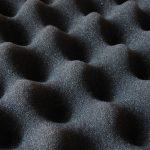Leveling compound is a mixture of cement designed to pour easily over a concrete floor to smooth out any uneven areas in that floor. The leveling compound is also called self-leveling cement or compound. All it is, is very wet mix cement with a consistency much like tomato soup. It is important to level a […]
Materials & Supplies
How to Level a Concrete Floor for Tile
If you plan on tiling your concrete floor, it is imperative the floor be perfectly flat first before you lay tiles on it, especially if you plan to lay large tiles. If the floor is not leveled, the tiles will lay at an angle, the sides won’t line up and you’ll have gaps between the […]
Choosing Grout
Choosing grout might seem simple, but choosing the right grout is not such an easy task. There are many things to consider before you make your choice like color, water resistance, and its potential to stain. Consider these factors before you choose your grout and your tile installation will look and perform better.
Grouting Floor Tile Properly
Grouting floor tile is slightly different than grouting wall tile. Since the tile is on the floor, you will use different tools to apply and scrape your grout. You’ll also take special steps around fixtures to help seal out water and protect your walls and floor.
How to Grout Tile the Right Way
Grout is the key to any tile installation. Grout helps hold tiles in place, creates a water-tight barrier and also adds a cosmetic touch. Sometimes, grout can offset uneven tiles as well, especially if you are using tiles without straight edges. But in order for it to work properly, you need to learn how to […]
How to Remove Wall Molding
Wall molding adds a nice touch to your home by creating a contrast between the walls and floor. Usually, the wall molding is straight, and therefore creates a nice, even line for the eye to follow. However, molding can often be a victim of mold and water damage due to its proximity to the floor. […]
How to Mount or Install Fiberglass Molding
Fiberglass molding is the same as wood molding except for the fact that it is manufactured using a mold, instead of cut and shaped like regular wood. This molding has similar properties to wood but it is lighter, durable and moisture resistant. The molding installs with adhesive or finishing nails just like wooden molding. The […]
Installing Wood Studs on a Wall
If you are trying to install wood studs with the wide edge facing flat against a wall, there is a special name for it. The studs are called “furring strips” since they are not load-bearing. Either 2-by-2-inch, 2-by-3-inch or even 2-by-4-inch stud boards can be used for this project. This technique is used to support […]
Heating a Home With an Outdoor Wood Stove
An outdoor wood stove is one way to heat a home. This solution is often used in rural areas where firewood, the fuel source, is readily available. Making an outdoor wood stove is an extensive DIY project, but if you are familiar with heating systems, distributors and wood stove projects, it might be for you. […]
Install or Mount Foam Sheets
Foam sheets add another layer of insulation to your home and today are among the top choices for home building professionals due to their efficiency. They are also easy to install and mount. The rigid foam sheets contain two layers of paper backing and an inner core of foam. This composition blocks cold air drafts […]







